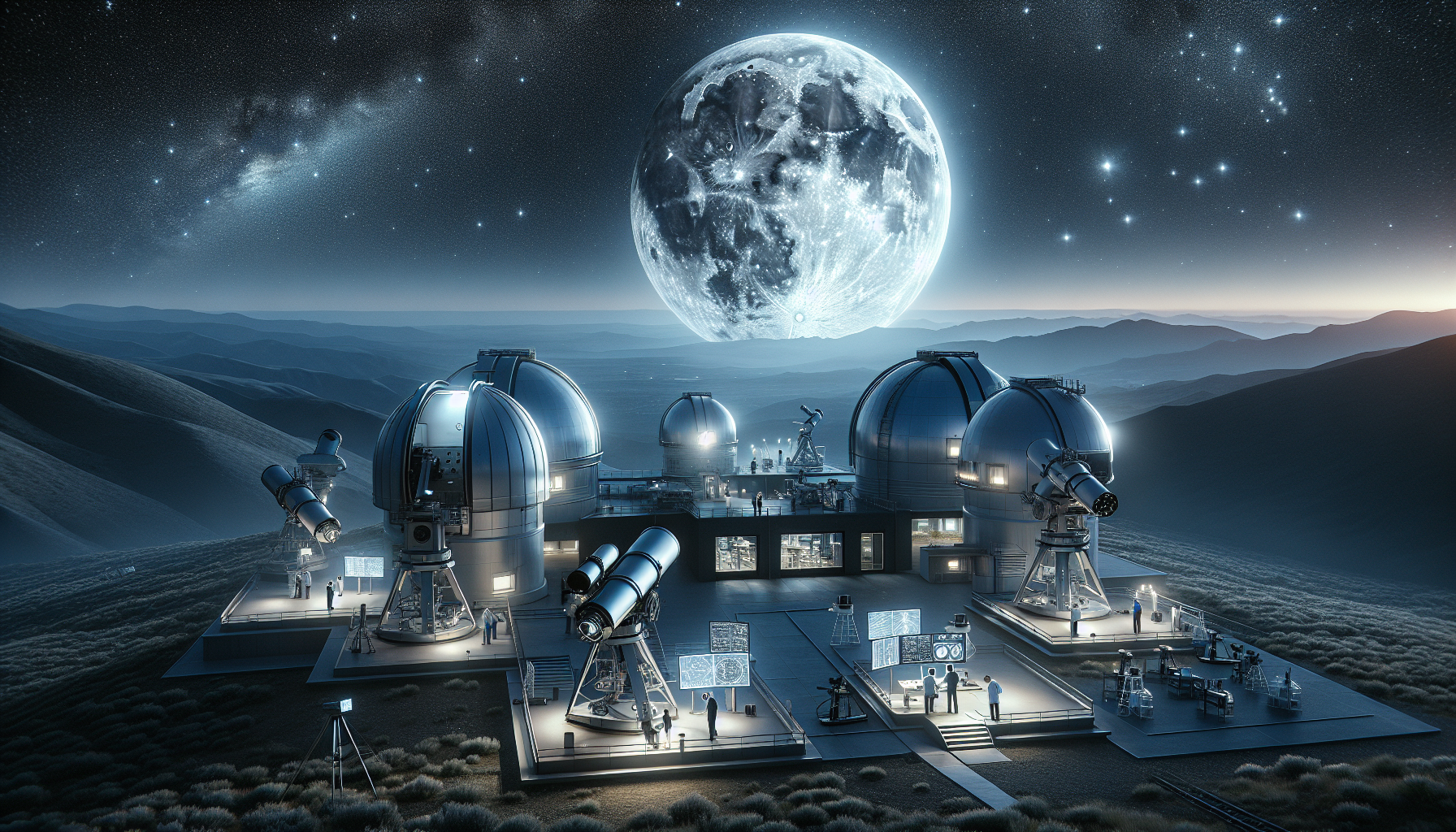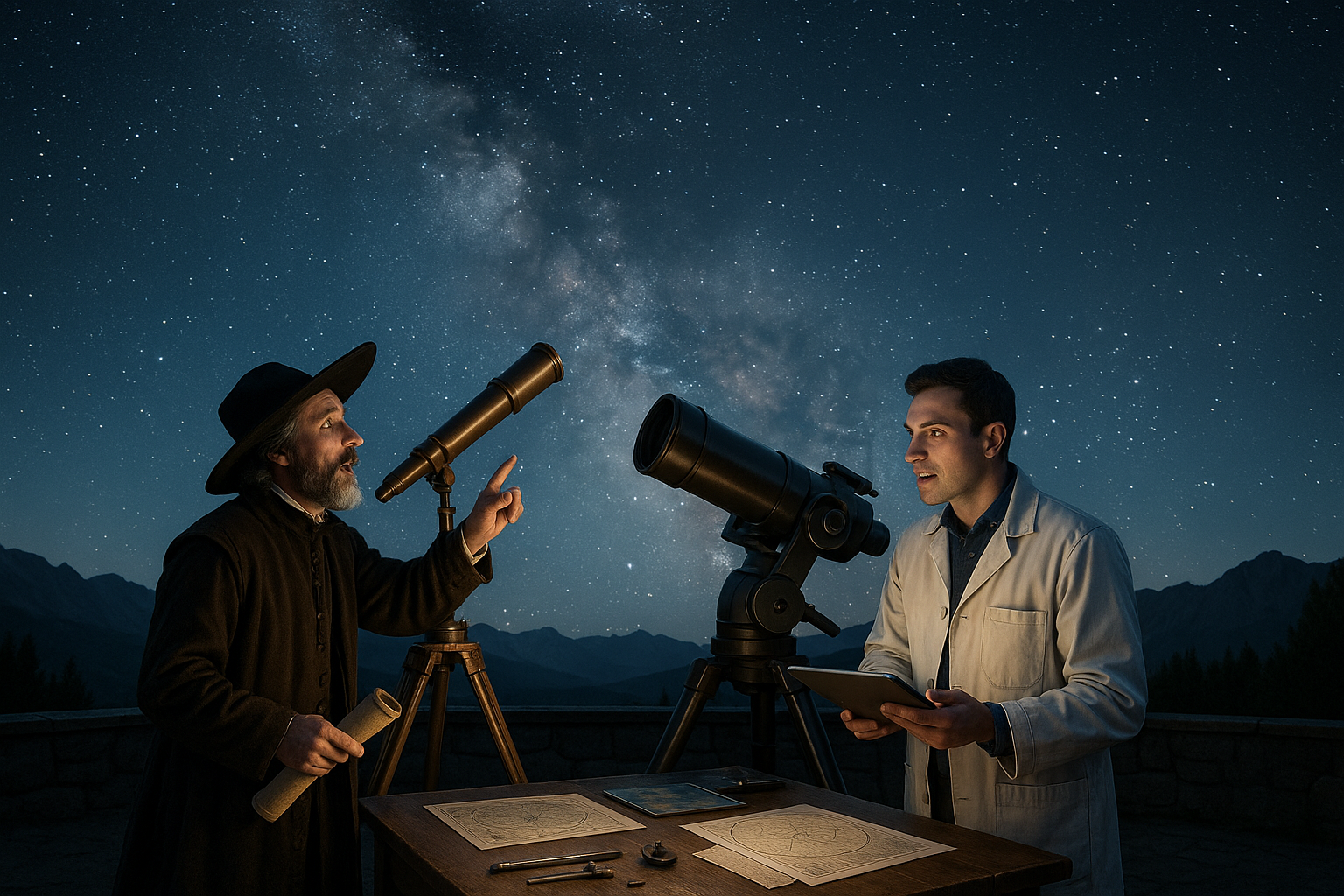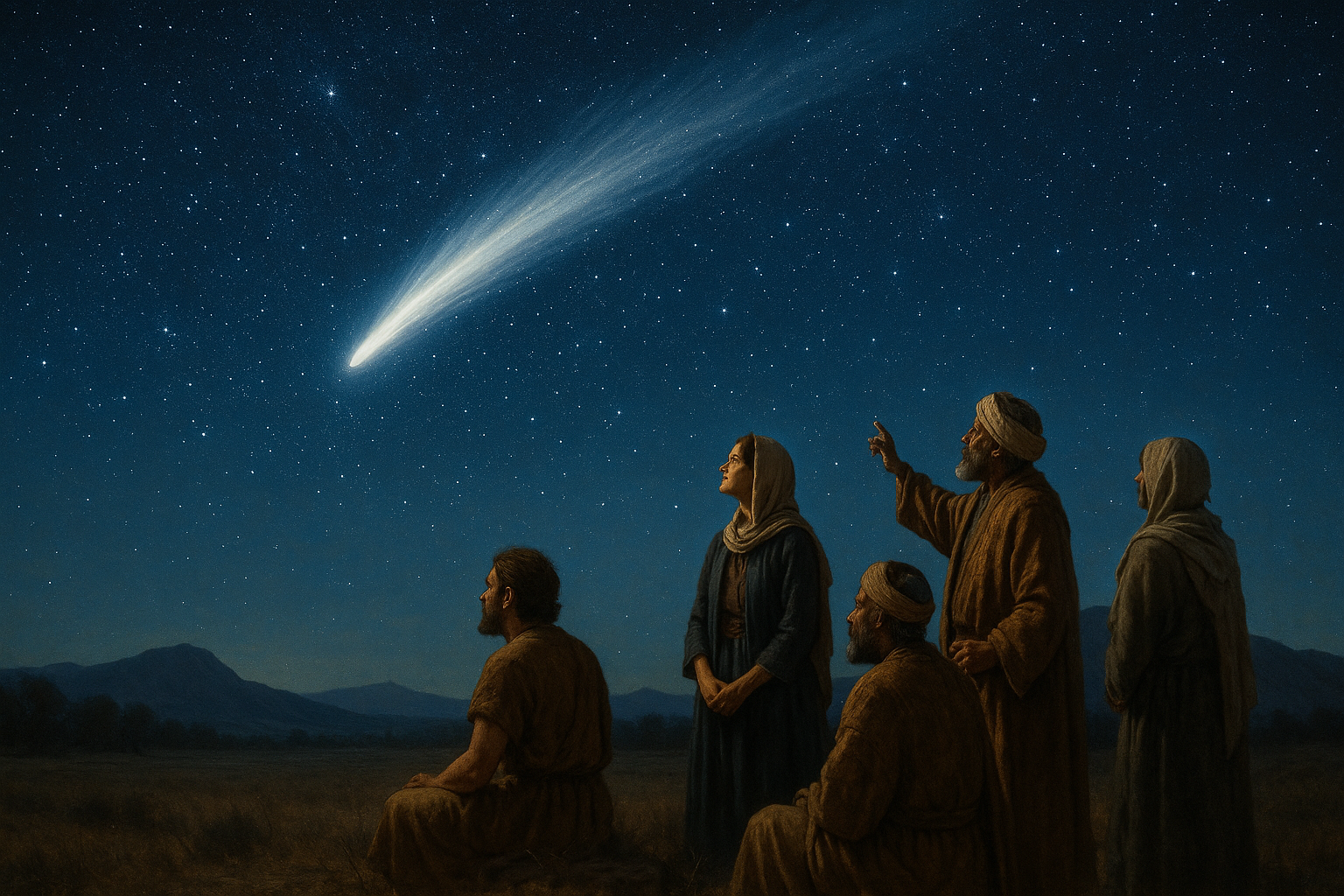The moon, our closest celestial neighbor, has been a source of fascination and inspiration for humanity since time immemorial. 🌕 Its gentle glow has guided travelers, influenced cultures, and even tugged at the tides, playing a crucial role in the rhythm of life on Earth. Yet, despite its constant presence in our night sky, the moon still holds many secrets waiting to be unveiled. Among these mysteries, the phenomenon of lunar standstill captivates astronomers and sky-watchers alike, offering a unique perspective on the celestial dance between the Earth and its satellite. In this exploration, we delve into the enigmatic world of lunar standstills, revealing their significance and the powerful insights they provide into the dynamics of our solar system.
Understanding Lunar Standstill
The phenomenon of lunar standstill is a captivating aspect of our natural satellite’s orbital mechanics. It occurs due to the complex gravitational interactions between the Earth, the Moon, and the Sun, resulting in periodic variations in the Moon’s orbit. Lunar standstill refers to the times when the Moon’s declination, or its position relative to the Earth’s equator, reaches its maximum or minimum limits. These limits are not fixed and can shift over an 18.6-year cycle due to the precession of the Moon’s orbit.
During a major lunar standstill, the range of the Moon’s declination is at its maximum, leading to extreme lunar rises and sets. Conversely, during a minor lunar standstill, the declination range is at its minimum, resulting in less pronounced changes in the Moon’s position in the sky. This cyclical event plays a crucial role in various natural phenomena, including tides, and has been observed and revered by ancient cultures for its predictive power in agricultural and ceremonial contexts.
To fully appreciate the importance of lunar standstills, it’s essential to explore the historical and scientific perspectives that underscore their significance. The cycle’s impact on ancient architecture and modern science demonstrates the intricate relationship between celestial movements and terrestrial life. 🌕📚
Historical Perspectives on Lunar Standstill Observations
Throughout history, different cultures have observed and documented the phenomena associated with lunar standstills. The ancient civilizations were keen astronomers, meticulously tracking the heavens and their impacts on earthly activities. For example, the Neolithic people of Western Europe are believed to have designed structures like Stonehenge to align with celestial events, including lunar standstills. Such alignments were likely used to mark time and serve as a calendar for agricultural and ceremonial purposes.
In the Americas, the Chacoan culture of the Southwest United States constructed complex buildings and roads oriented toward the Moon’s position during lunar standstills. This architectural alignment suggests a sophisticated understanding of celestial cycles and their implications for social and religious practices. The ability to predict lunar standstills allowed these cultures to time their activities with precision, demonstrating a deep connection with the cosmos.
The significance of lunar standstills is not limited to historical contexts. In modern times, they continue to captivate astronomers and enthusiasts alike, offering a unique opportunity to observe the dynamic interactions between celestial bodies. The study of lunar standstills provides insights into the gravitational forces at play in our solar system and serves as a reminder of humanity’s enduring fascination with the Moon and its cycles. 📜🔭
Scientific Insights into Lunar Standstill
From a scientific standpoint, understanding lunar standstills involves analyzing the gravitational interactions that influence the Moon’s orbit. These interactions cause the nodal precession of the lunar orbit, an oscillation that shifts the nodes, or intersection points of the Moon’s orbit with the Earth’s orbit, over a period of 18.6 years. This precession results in the varying declination of the Moon, leading to the alternating cycles of major and minor lunar standstills.
Lunar standstills have implications for tidal forces, as the Moon’s gravitational pull is a primary driver of tides on Earth. During major standstills, the extreme declination of the Moon can lead to higher high tides and lower low tides, affecting coastal ecosystems and human activities. Understanding these variations is crucial for coastal management and planning, particularly in regions vulnerable to flooding and erosion.
Additionally, the study of lunar standstills contributes to our broader understanding of celestial mechanics. By observing these events, scientists can refine models of the Moon’s orbit and enhance predictions of its future positions. This knowledge is not only valuable for academic research but also for practical applications, such as navigation and space exploration. 🌊🛰️
Lunar Standstill and Its Impact on Modern Society
In today’s world, the implications of lunar standstills extend beyond academic interest and into practical applications. The understanding of lunar cycles plays a vital role in various fields, from agriculture to technology. For instance, farmers can utilize knowledge of lunar standstills to optimize planting and harvesting schedules, capitalizing on the Moon’s influence on plant growth and soil moisture levels.
Moreover, lunar standstills offer a unique opportunity for educational outreach and public engagement in astronomy. By organizing events and observations during these periods, institutions can inspire a sense of wonder and curiosity about the natural world. Such initiatives help bridge the gap between scientific research and public understanding, fostering a deeper appreciation for the interconnectedness of celestial and terrestrial phenomena.
The cultural significance of lunar standstills also continues to resonate in contemporary society. Many traditions and rituals incorporate lunar cycles, reflecting the enduring influence of the Moon on human life. By studying and observing lunar standstills, we can gain a greater appreciation for the historical and ongoing relationship between humanity and the cosmos. 🌿🌌
Comparative Table: Major vs. Minor Lunar Standstills
| Aspect | Major Lunar Standstill | Minor Lunar Standstill |
|---|---|---|
| Declination Range | Maximum | Minimum |
| Tidal Impact | High | Low |
| Historical Significance | High | Moderate |
| Astronomical Interest | High | Moderate |
Embracing the Mysteries of Lunar Standstills
As we delve deeper into the mysteries of lunar standstills, it’s clear that these celestial events hold a wealth of information and inspiration. Whether viewed through the lens of history, science, or culture, lunar standstills provide a unique window into the dynamic interactions of our solar system. By embracing the study of these phenomena, we open ourselves to new insights and perspectives on our place in the cosmos.
For those eager to explore further, numerous resources are available to deepen your understanding of lunar standstills. From scientific publications to online forums, there are ample opportunities to engage with experts and enthusiasts alike. Additionally, witnessing a lunar standstill firsthand can be a transformative experience, offering a tangible connection to the rhythms of the universe.
- Observe the Moon’s position during different lunar phases.
- Participate in local astronomy events to witness lunar standstills.
- Read up on the historical significance of lunar observations.
- Engage with online communities to share insights and experiences.

Conclusion
Unlocking the mysteries of the Moon through the exploration of lunar standstill observations is not only an intriguing scientific endeavor but also an opportunity to deepen our understanding of Earth’s celestial companion and its profound impact on our planet. This article has journeyed through the multifaceted dimensions of lunar standstills, encompassing their astronomical significance, historical context, and potential implications for future research.
To recapitulate, we began by unraveling the concept of lunar standstills, which occur due to the Moon’s elliptical orbit and its inclination relative to Earth’s equator. These phenomena, characterized by the extreme declination of the Moon’s orbit, offer unique observational opportunities that have fascinated astronomers and cultures throughout history. The 18.6-year cycle of major and minor standstills provides a rhythmic dance that has been meticulously documented by ancient civilizations, as seen in megalithic structures and historical records.
The historical exploration of lunar standstills highlights the ingenuity of early astronomers and the role of the Moon in shaping calendars, agricultural practices, and religious ceremonies. Cultures such as the ancient Mesopotamians, Chinese, and indigenous peoples of the Americas utilized lunar cycles to structure their societies and imbue their rituals with cosmic significance. These historical insights remind us of the timeless human curiosity about the heavens and the desire to decode the messages of the cosmos.
In the modern era, lunar standstill observations have gained renewed interest due to advancements in technology and astrophysics. Contemporary astronomers use sophisticated instruments and satellites to study these phenomena with unprecedented precision. The insights garnered from these observations have far-reaching implications for our understanding of lunar dynamics, Earth’s axial precession, and the gravitational interactions between celestial bodies.
Lunar standstills also serve as a powerful reminder of the interconnectedness of the Earth-Moon system. By examining these events, scientists can refine models of Earth’s rotational dynamics and contribute to climate studies by examining how variations in the Moon’s orbit influence ocean tides and atmospheric patterns. This knowledge is crucial in the context of contemporary challenges, such as climate change and sea-level rise, where even subtle gravitational influences can have significant impacts.
Moreover, the study of lunar standstills inspires us to contemplate our place in the universe and the delicate balance of forces that sustain life on Earth. The Moon, often regarded as a symbol of change and continuity, invites us to reflect on the broader cosmic rhythms that govern our existence. It serves as a bridge between the tangible and the intangible, encouraging us to explore the mysteries that lie beyond our immediate perception.
As we conclude this exploration of lunar standstills, it is essential to recognize the profound significance of continued research and observation in this field. The mysteries of the Moon hold untapped potential for scientific discovery and cultural enrichment. By unlocking the secrets of lunar standstills, we not only expand our understanding of the universe but also honor the legacy of those who have gazed at the Moon with wonder throughout history.
In light of these insights, we encourage readers to engage with this topic by sharing their thoughts and reflections. Whether you are an avid stargazer, a student of history, or someone who appreciates the beauty of the cosmos, there is much to explore and discuss. Share this article with friends and colleagues, and consider how the lessons of lunar standstills might inform your own understanding of the natural world. 🌕✨
For those interested in delving deeper into this fascinating topic, we recommend exploring resources from reputable scientific organizations and institutions. Websites such as NASA’s Moon Portal (https://moon.nasa.gov/) and the International Astronomical Union (https://www.iau.org/) offer valuable insights and up-to-date information on lunar research and celestial events.
In conclusion, the power of lunar standstill observations lies not only in their scientific merit but also in their ability to connect us to the broader tapestry of the universe. Let us continue to unlock the mysteries of the Moon, for in doing so, we illuminate the pathways to greater knowledge and inspire future generations to look up and wonder at the night sky. 🌌
Toni Santos is a visual storyteller and cosmic interpreter whose work illuminates the ancient skywatchers and their prehistoric astronomy—the profound ways early humans observed and revered the heavens before written history. Through a visionary lens, Toni explores how the stars, planets, and celestial cycles shaped myth, ritual, and survival in cultures lost to time.
Rooted in a fascination with archaic observatories, stone alignments, and celestial symbolism, Toni’s creative journey reveals the deep human impulse to understand and harmonize with the cosmos. From lunar phases guiding planting seasons to the sacred paths of the Milky Way, each of his works embodies the awe and knowledge encoded in the night sky.
Combining artistic craftsmanship with archaeological insight, Toni’s pieces evoke the mystery and precision of prehistoric astronomers. His work does more than depict—it channels the timeless dance between earth and sky, bridging ancient wisdom with contemporary wonder.
As the visionary behind Vizovex, Toni shares curated visuals, essays, and symbolic studies that invite others to reconnect with the cosmic heritage written in stone and starlight. His creations are a call to look upward, to listen to the silent stories told by the stars, and to honor the first astronomers who mapped the heavens with reverence and ingenuity.
His work is a tribute to:
The celestial wisdom of prehistoric peoples
The sacred geometry of ancient observatories
The enduring bond between human culture and the cosmos
Whether you’re a stargazer, a scholar of ancient mysteries, or someone captivated by the universe’s earliest storytellers, Toni welcomes you to journey through a space where the sky is both map and myth—one constellation, one ritual, one revelation at a time.




